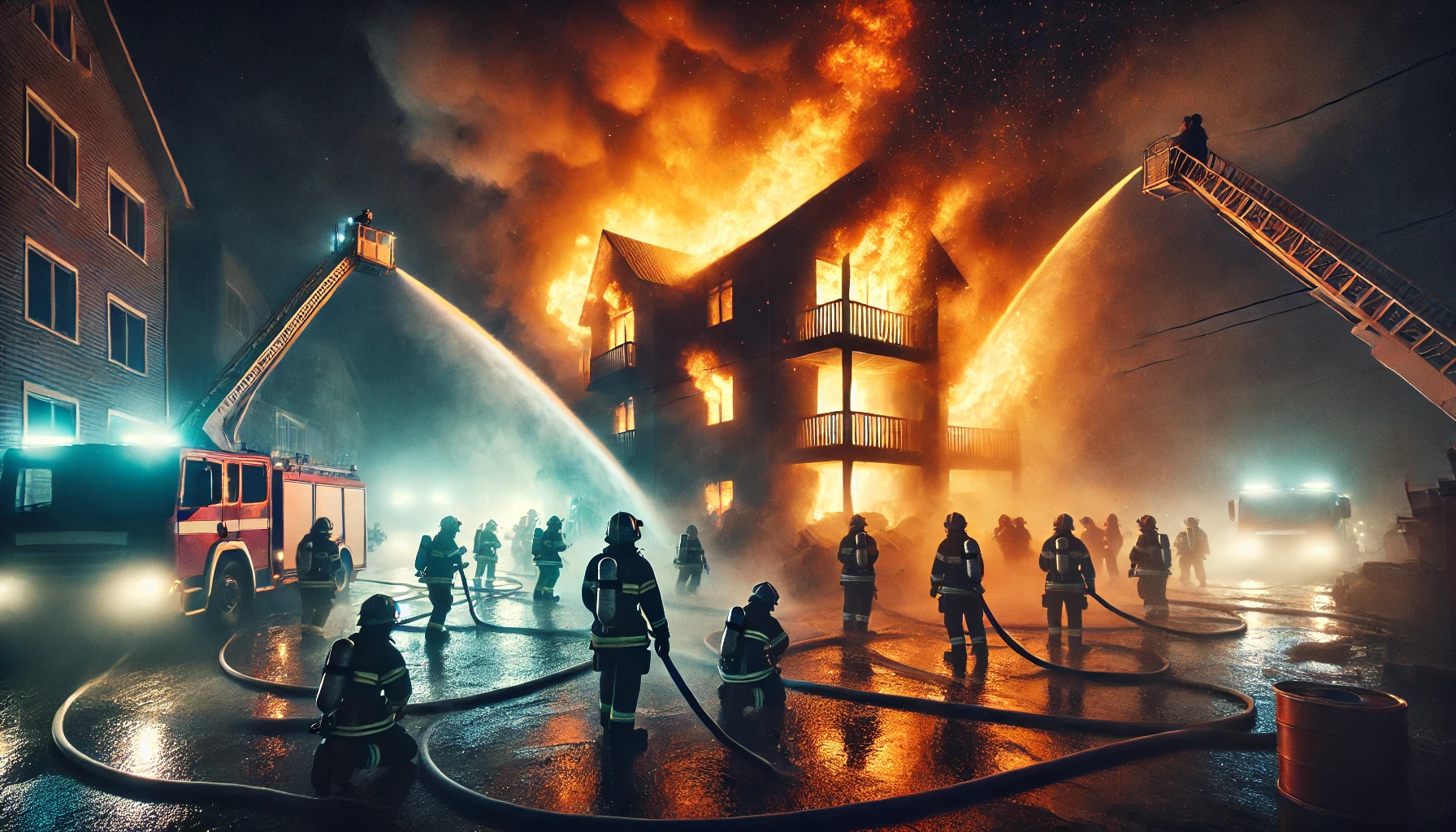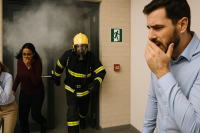
Fire safety is often treated as an afterthought, particularly by businesses and property managers looking to save money. While initial costs for fire prevention measures might seem high, neglecting proper fire safety can lead to devastating consequences—both financially and in human lives. Here, we explore why cutting corners on fire safety is a costly mistake in the long run and why making safety a priority can save money, lives, and reputation.
The Immediate Financial Risks
Saving on fire safety measures might seem like a smart financial decision at first, but the short-term savings pale in comparison to the potential costs of a fire incident. Property damage alone can amount to thousands or even millions of dollars, depending on the scale of the fire. The loss of physical assets, equipment, inventory, and even crucial business data can result in significant financial strain. Moreover, insurance premiums often increase significantly after a claim, further adding to the financial burden and potentially making it more difficult for a business to recover.
- Legal and Regulatory Penalties
Failure to comply with fire safety regulations can lead to fines, lawsuits, or even the closure of your business. Regulatory bodies enforce strict fire safety standards, and non-compliance often results in hefty penalties. These penalties can include daily fines that accumulate over time, potentially totaling substantial sums. In severe cases, negligence can lead to criminal charges, especially if injuries or fatalities occur. Legal battles can be prolonged, costing businesses even more in legal fees and further damaging their reputation. - Increased Insurance Costs
Beyond fines and penalties, fire incidents can lead to increased insurance costs. When a business makes a claim, insurers may see it as a higher risk and increase premiums or refuse coverage altogether. This creates an ongoing financial strain that could have been avoided by implementing proper fire safety measures in the first place.
The Human Cost
While financial losses can be mitigated, the human cost of inadequate fire safety is immeasurable. Lives lost or permanently altered due to fire incidents cannot be replaced, and the emotional toll on survivors and families is profound. For businesses, the loss of employees or customers can irreparably damage reputation and trust. Survivors who experience trauma from a fire can also face long-term psychological challenges, affecting their productivity and well-being.
- Impact on First Responders and Community Safety
When fire safety is compromised, it also places an undue burden on first responders. Fire departments and emergency services may face greater risks and challenges in managing a fire incident, which can lead to more severe injuries among those trying to contain the fire and rescue individuals. Inadequate fire safety measures can impact the safety of the community as a whole, raising questions about a business’s commitment to responsible practices.
Hidden Costs of Neglecting Fire Safety
- Business Interruption
A fire incident often means temporary or permanent closure of a business. Revenue loss during downtime can be devastating, especially for small and medium-sized enterprises. Even with insurance, it can take months or years to recover fully. This disruption can cause a ripple effect, impacting suppliers, partners, and even customers who rely on your services or products. - Reputation Damage
A business that experiences a preventable fire risks its reputation. Customers, partners, and stakeholders may lose confidence in your ability to ensure safety, making it difficult to rebuild trust. News of a fire can spread quickly, damaging the brand and deterring potential clients or investors. The long-term impact on customer loyalty can be profound, as individuals tend to gravitate toward companies that prioritize safety and reliability. - Increased Maintenance and Retrofit Costs
Delaying fire safety investments often leads to higher costs later. Aging buildings and equipment become harder to upgrade to meet modern fire safety standards. Retrofitting fire alarms, sprinklers, or fire-resistant materials into existing structures is far more expensive than incorporating them during initial construction or early upgrades. Additionally, the need to disrupt business operations for retrofitting can lead to further lost revenue and logistical headaches. - Potential for Increased Legal Exposure
Businesses that cut corners on fire safety are also more likely to face legal actions from customers, employees, or regulatory bodies in the aftermath of an incident. Lawsuits can lead to costly settlements and damage to the company’s reputation. Legal battles can take months or even years to resolve, leading to significant financial and operational stress.
Cost-Effective Fire Safety Strategies
Investing in fire safety doesn’t have to break the bank. Here are some cost-effective measures that can help prevent costly incidents:
- Regular Maintenance and Inspections: Ensuring that fire alarms, sprinklers, and extinguishers are functional prevents minor issues from escalating into major disasters. Regular inspections can help identify problems early and allow for timely repairs.
- Employee Training: Comprehensive training programs can teach staff how to use fire safety equipment and follow evacuation protocols. Regular drills can keep employees prepared and aware of the procedures to follow in case of a fire.
- Comprehensive Risk Assessments: Identify potential fire hazards and address them proactively. A thorough risk assessment helps pinpoint areas that need immediate attention and ensures that fire safety measures align with the specific needs of your business.
- Use of Modern Technology: Smart fire safety systems can detect and respond to fire hazards faster, reducing damage and risks. Investing in automated detection systems and integrated alarms can make a significant difference in controlling fires before they spread.
- Fire-Resistant Materials and Upgrades: Incorporating fire-resistant materials during construction or as part of upgrades can make a significant difference in slowing the spread of a fire. Fire-resistant coatings and barriers can help buy time for evacuation and emergency response.
Conclusion
Cutting corners on fire safety is a false economy. The upfront investment in proper fire prevention and protection measures is far less costly than the long-term financial, legal, and human costs of a fire incident. Prioritizing fire safety safeguards lives, property, and the future of your business. It demonstrates a commitment to responsible practices that can build trust with customers, employees, and the community. In the end, it’s an investment that pays for itself many times over, ensuring peace of mind and long-term success.





Leave A Comment